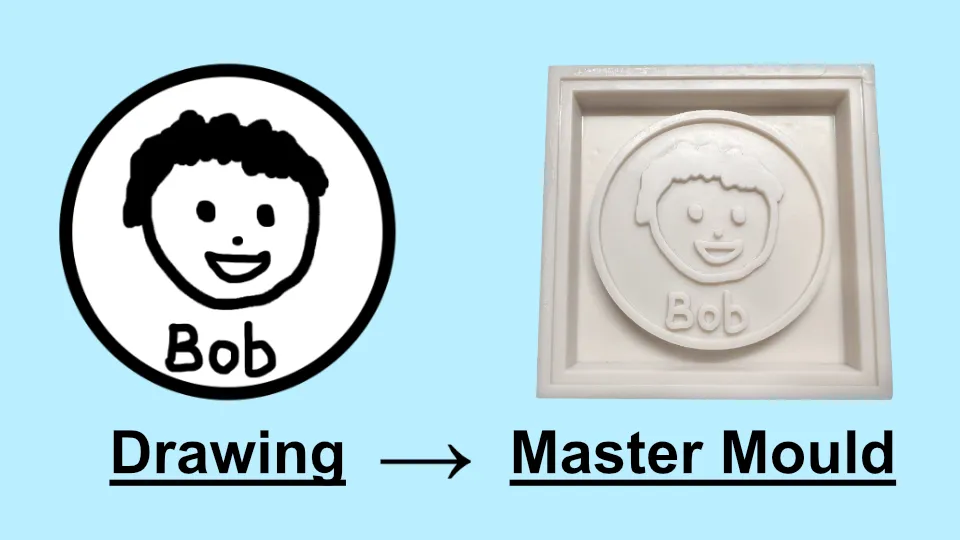3D Print Chocolate Mould Created with the Chocolate Designer
Our online tool, Chocolate Designer, can instantly design a master mould ready for 3D printing.
You will use the master mould to make food-safe silicone mould, which is explained in our next blog post.
There are 2 types of consumer 3D printers available: Resin (using UV lasers) and FDM (filament-based).
Below, we detail the process for each printing method.
Resin Printer
A Resin printer is recommended for both photo and doodle images. Resin printers deliver high-resolution prints without the visible layer lines seen in FDM printing.
1. XY Resolution
The printer’s XY resolution is crucial for image quality.
- For photos, a resolution of 50 microns (0.05mm) or finer is necessary.
- For doodles, a resolution of 100 microns (0.1mm) or finer is sufficient.
2. Layer Height
Layer height (or Z resolution) also impacts the quality of photos, particularly where there are subtle changes in brightness.
- Aim for a Z resolution below 20 microns (0.02mm).
3. Resin Quality
High-end resins are not essential; budget-friendly resins can achieve great detail even for photos.
Instead, focus on the resin color—darker resins are preferred since they limit the penetration of UV light, reducing unwanted curing in adjacent areas.
Filament Printer
FDM filament printers are more suited for doodle images and are not ideal for photos.
For a doodle image mould, consider the following:
1. Nozzle Width
Keep in mind that FDM prints inherently display surface layer lines.
To minimize these, use a smaller nozzle—preferably 0.4mm or less.
2. Nozzle Material
While brass nozzles are common, they contain lead, which can contaminate the filament and eventually the mould.
Stainless steel is a safer alternative, though it’s best to check with the manufacturer for specifics.
3. Filament Material
Ensure your filament is free of harmful additives.
Generally, PLA and PETG are considered safe, but confirm with your manufacturer for additional details.
Avoid filaments that include metal, wood, carbon fiber, or glow-in-the-dark additives. If your nozzle has been used with such materials, consider replacing it.
Conclusion
For best results, a resin printer is the top recommendation—it offers high resolution and faster printing times.
However, if you are using an FDM filament printer, you can still achieve great results by working with the doodle image type.
